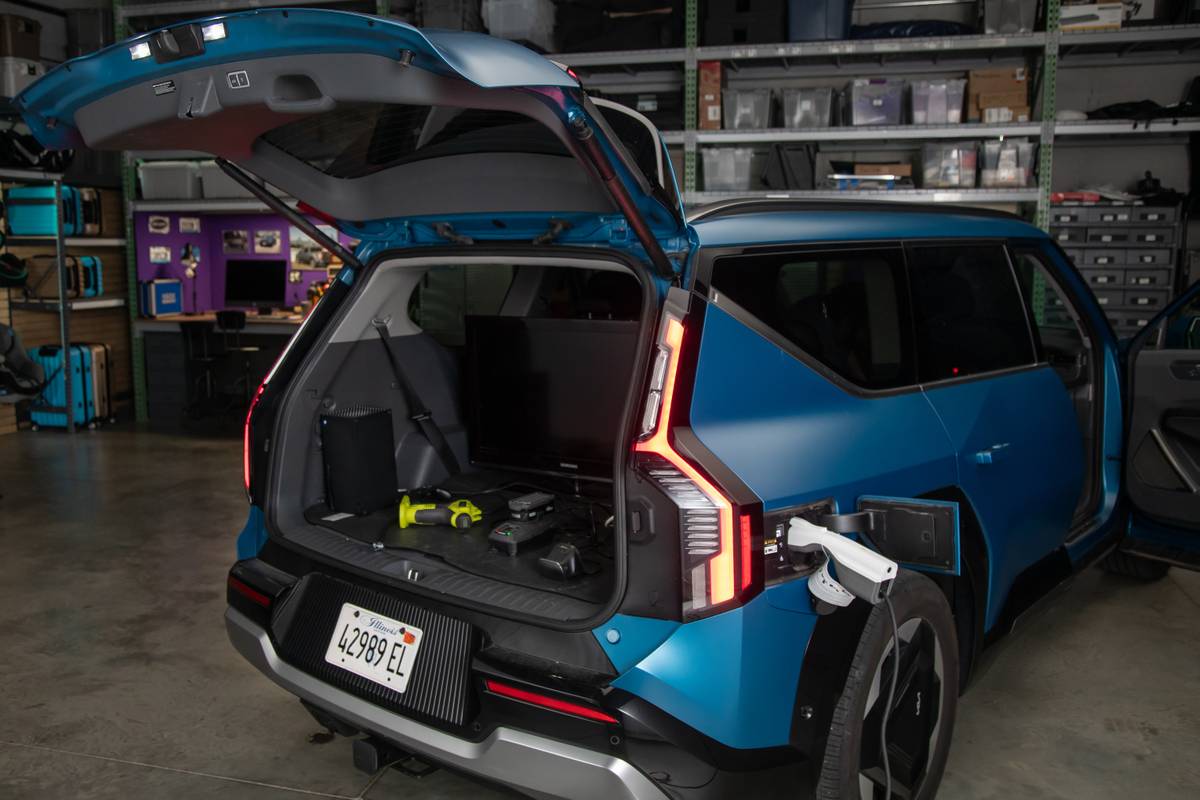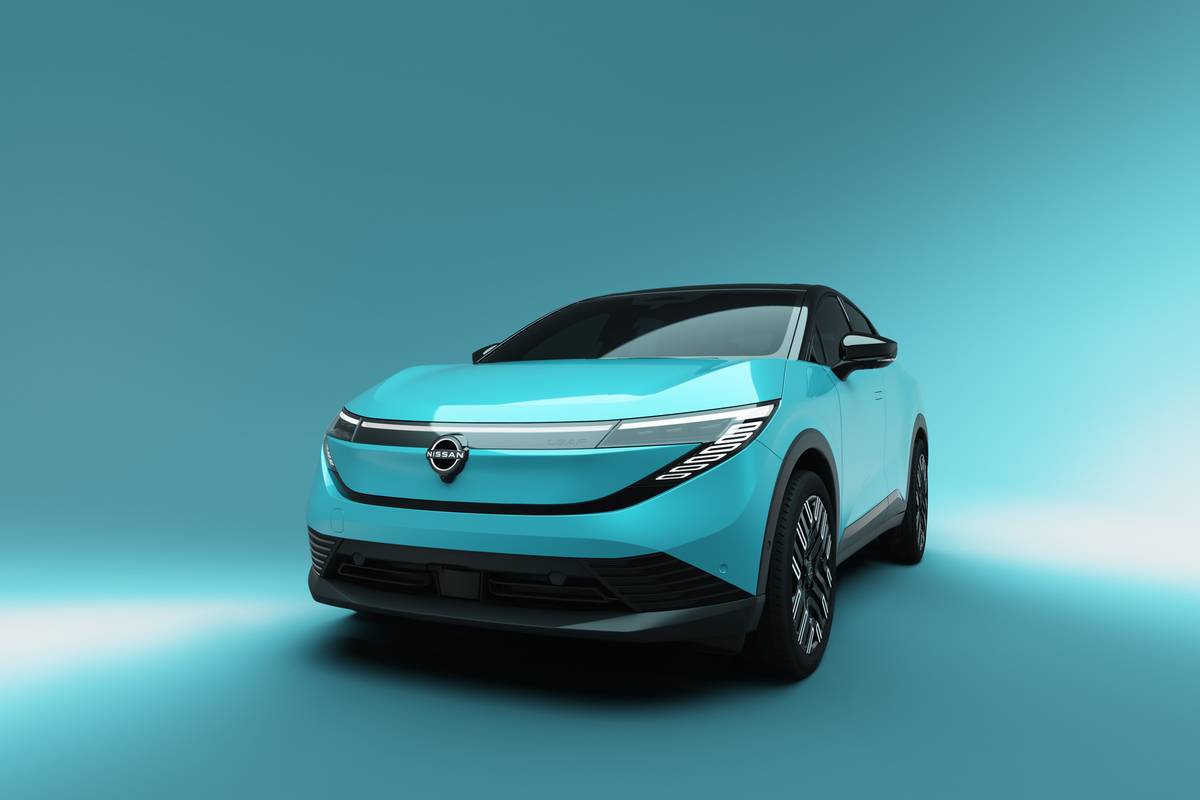chicagotribune.com's view
Ford hybrid an escape from the car-based
Imagine peeking at the instrument panel display reading that the vehicle is obtaining 60 m.p.g. as it passes the gas station advertising unleaded regular for $1.99 a gallon.
It would have been even more exhilarating if the machine was a full-size Ford Excursion sport-ute and not a compact Ford Escape SUV.
But the ’05 Escape with gas/electric power available for testing before going on sale this fall was enjoyable, nonetheless.
Toyota and Honda have a considerable lead in hybrids on Ford. Honda first offered a two-seater, the Insight car, in the 2000 model year. Toyota followed with a four-passenger Prius sedan in the ’01 model year. Honda added a four-passenger hybrid Civic in ’03.
Ford opted for a hybrid SUV, and soon will be joined by Toyota. This fall, Toyota’s luxury Lexus division brings out a hybrid version of its midsize RX330 sport-ute called the 400H and early next year Toyota adds a hybrid Highlander SUV. This fall Honda also brings out a hybrid Accord sedan.
So Ford has some catching up to do. Based on current plans, it will catch up slowly. The hybrid Escape will be followed by a compact Mercury Mariner hybrid in two years and a hybrid version of its new front-/all-wheel-drive midsize sedan initially dubbed the Futura after the 2006 model year.
But better to play catch-up than not play at all.
“Toyota and Honda came out with unique cars for their first hybrids while we decided to go with a popular current vehicle. Other than a few green-leaf badges our hybrid doesn’t announce to everyone that it’s different or that the owner is concerned about gas prices and the environment,” said Barb Samardzich, executive director for small front- and rear-wheel-drive vehicles at Ford.
She said Ford should sell about 20,000 hybrid Escapes for ’05.
“If demand is high, we could build more,” she said.
Hybrids are designed for the electric motor to take some of the load off the gas engine when starting the car and to add needed muscle to merge, pass or climb hills.
Escape is powered by Ford’s new 2.3-liter 4-cylinder gas engine and a 70-kilowatt electric motor with a nickel-metal-hydride battery pack.
Individually they’d deliver so-so pep, 133-horsepower from the gas engine, 94-h.p. from the electric motor. Collectively, they act as if a 155-h.p. V-6 was under the hood. No hesitation or delay. Press the pedal and go.
One reason hybrid power was delayed at Ford was the wait for the new 2.3-liter 4-cylinder for ’05. It was designed to accept hybrid power and will be used in a variety of future Ford vehicles.
“The hybrid system was designed with duplication in mind and use in any Ford vehicle that offers our new 2.3-liter 4 so that we could cascade it into other vehicles, even passenger cars,” Samardzich said.
By using gas and electric power, the Es cape hybrid has off-the-line, passing and merging muscle when needed, but the fuel consumption of a 4-cylinder engine all other times.
Combining gas with electric power means you don’t stop to plug into a socket to recharge the batteries like you would with a car run totally on batteries. With a hybrid, the batteries recharge as you drive.
Mileage is estimated at 35 to 40 m.p.g. in city driving, 29 to 31 m.p.g. in highway driving, which compares with 23/28 with Escape’s 2-liter 4-cylinder and 18/23 with its 3-liter V-6 gas engines.
Only ranges are available because the EPA hasn’t finalized the figures. The rating will be lower with all-wheel-drive, but there’s no estimate yet.
The hybrid is offered with a continuously variable transmission with an infinite variety of gear ratios that also contribute to higher mileage. Gears change based on power demands as you press or release the fuel pedal.
To understand the Escape hybrid system, you have to add the $1,850 in-dash hybrid energy display, which includes audiophile/navigation system displays, too.
A schematic shows when electric motor or gas engine or both are working or the batteries are recharging.
Before long you start slowing down, speeding up, climbing and then coasting down inclines to learn when the SUV is in electric mode and when dual gas/electric mode takes over. Typically, it will run only on the gas engine on the open highway, such as when traveling at 75 m.p.h. on the interstate.
A companion schematic gives a real time mileage reading and an average over the previous 15 minutes. It demonstrates how quickly mileage can switch from good to poor in climbing or passing, or from poor to good (that 60 m.p.g. reading) if you feather the pedal or coast down an incline.
Our best 15-minute reading was 35.6 m.p.g. on a rather even mix of flat and uneven roads.
Word of caution, the dash displays are so enticing it’s easy to take your eyes off the road for lengthy periods.
Ford boasts the hybrid 4-cylinder has the spirit of a V-6, and it lives up to the boast. Most wouldn’t know a hybrid was under the hood. But there are a couple of oddities you need to get used to, such as silence when you turn the key and start the vehicle and when you sit at the light waiting for it to turn green.
By using the electric motor to get started and move, there’s no sound until you reach about 20 m.p.h. and the gas engine joins in to get you up to cruising speed. When braking to a stop, however, you’ll hear a muffled whine from the electric motor.
Samardzich said the hybrid Escape will be available first in the five states this fall that have stricter emissions regulations than the other 45–California, New York, New Hampshire, Maine and Massachusetts. It will reach the Chicago area at year-end.
And before you ask, in cold climates a special “heating pack” retains engine heat to keep the batteries warm so they’ll start the car in the morning.
Base price of the Escape hybrid is $26,380 with front-wheel-drive and $28,005 with AWD. That’s about $3,300 to $3,400 more than with the V-6 and about $5,000 to $7,000 more than with the 4-cylinder gas engine.
“The consumer gets some of it back, about $1,500 from government subsidies for alternative-fuel vehicles,” Samardzich said.
Ford, as well as Toyota and Honda, offer an eight-year/100,000-mile warranty for the hybrid nickel metal hydride batteries and motor. The gas engine is covered by the regular three-year/36,000-mile warranty.
No one knows what it will cost to replace the batteries in eight years, though Samardzich points out that eight years/100,000 miles is a conservative life expectancy and “as we add more hybrids in the future, we’ll find ways to get the cost down.”
You also have to understand that because hybrids start and get going using battery power, they offer the best mileage in stop-and-go driving, not on the open road.
But hybrid doesn’t mean you have to sacrifice amenities, with power seats, windows, mirrors, door locks and air conditioning all standard.
The Escape hybrid should do well, though the all-wheel-drive version would seem the most logical for those who want to conserve fuel in the Snow Belt.
– – –
2005 Ford Escape Hybrid FWD
Wheelbase: 103.1 inches
Length: 174.9 inches
Engine: 2.3-liter, 133-h.p., 4-cylinder gas engine teamed with 94-h.p., 70-kilowatt electric motor
Transmission: Continuously variable automatic
Fuel economy: Estimated 35-40 m.p.g. city/29-31 m.p.g. highway because EPA rating not official
Base price: $26,380
Price as tested: $30,150. Includes $575 for leather comfort group; $595 for safety package with side-curtain air bags and front- and side-impact air bags; $110 for 110-volt accessory power ou let; $75 for retractable rear cargo cover; $565 for Ford-MACH six-disc in-dash CD player; and $1,850 for in-dash display of hybrid energy and audiophile/navigation systems. Add $590 for freight.
Pluses: A hybrid to conserve fuel in a sport-utility vehicle. This SUV has the power of a V-6, but better mileage than a 4-cylinder gas engine (23 city/28 highway). Four-wheel-drive an option.
Minuses: Conservation doesn’t come cheap, with the base price $3,300 to $3,425 higher than Escape with V-6 or $5,000 to $7,000
Latest news



